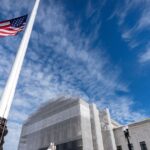
Democratic lawmakers on the House task force investigating the attempted assassinations of former President Donald Trump skipped the final portion of the panel’s first hearing Thursday, which featured the two Republicans who have been conducting their own “parallel” investigation into the shooting.
Reps. Eli Crane, R-Ariz., and Cory Mills, R-Fla., two Republicans and both military veterans, took part in the second portion of the hearing, but the Democratic minority fumed behind the scenes that their leadership was not informed of their testimony until late Wednesday afternoon, Fox News sources said. Some Democratic lawmakers were not informed until Thursday morning, however.
The move was seen as the first bipartisan split in what has been a united effort to investigate the incident thus far.
“We did not receive notice of the second panel until late yesterday. We didn’t have an opportunity to present our own witnesses,” Crow said when asked about Mills and Crane. “[Task Force Chairman Mike Kelly, R-Pa.] and I are still very committed to having this be bipartisan, consensus-based, and it’s my hope that we can return to that … approach going forward.”
Kelly similarly told reporters that this would not impede the task force’s bipartisan mission and said that he invited Mills and Crane to testify because of their expertise, welcoming their assessment of the security perimeter for the rally.
He brushed off Democrats’ absence during their portion of the hearing, suggesting that some members may have had flights out of Washington, D.C., per KTLA.
“If you want to participate, you can participate. If you decide not to, you can make that decision too,” Kelly said of the members.
Rep. Jason Crow, D-Colo., the ranking Democrat on the panel, said lawmakers were frustrated, but he made clear that it was not aimed at Thursday’s witnesses.
“We did not receive notice of the second panel until late yesterday,” Crow said. “It’s unclear to us what testimony will be provided by these witnesses that relates to today’s hearing.”
The first portion of the hearing, the panel heard from a former Secret Service agent, as well as local and state law enforcement officials who were present at the July 13 rally in Butler, Pennsylvania, where one attendee was killed and Trump himself was shot in the ear.
TRUMP SHOOTING: TIMELINE OF ASSASSINATION ATTEMPT RAISES QUESTIONS ABOUT HOW GUNMAN EVADED SECURITY
Witnesses and lawmakers repeatedly signaled that a lack of clear communication of security plans from the Secret Service helped lead to a 20-year-old gunman, Thomas Matthew Crooks, being able to open fire on the rally from a rooftop just outside the security perimeter.
“In the days leading up to the rally, it was not a single mistake that allowed Crooks to outmaneuver one of our country’s most elite group of security professionals. There were security failures on multiple fronts,” Kelly said.
“The communication between the Secret Service and local and state partners was disjointed and unclear,” Crow said. “It was the fault of the Secret Service, because the Secret Service is ultimately responsible for the protection at events like that. They did not do their job. They did not provide the clarity and the guidance to local law enforcement. That was pretty clear to me,” Crow told reporters.
One bullet grazed Trump’s right ear, while firefighter Corey Comperatore was fatally struck. Rally-goers James Copenhaver and David Dutch were also shot and injured.
One key question has been why there were no law enforcement personnel on top of the AGR building where Crooks eventually climbed up and took his shots, considering that it was so close to the rally stage and afforded a clear line of sight to Trump.
“A 10-year-old looking at that satellite image could have seen that the greatest threat posed to the president that day” was the building near the stage, said Rep. Pat Fallon, R-Texas.
The panel — comprised of seven Republicans and six Democrats — has spent the last two months analyzing the security failures at the rally, conducting nearly two dozen interviews with law enforcement and receiving more than 2,800 pages of documents from the Secret Service.
An interim report released Wednesday from the Senate Homeland Security and Governmental Affairs Committee, which is also conducting an investigation, said the Secret Service failed to give clear instructions on how state and local officials should cover the building where the gunman eventually took up position. The report also said the agency didn’t make sure it could share information with local partners in real-time.
Multiple lawmakers indicated that they are looking to hear from Acting Secret Service Director Ronald Rowe again, particularly after Congress recently allocated $230 million in additional funding for the agency.
Fox News’ Elizabeth Elkind and The Associated Press contributed to this report.








